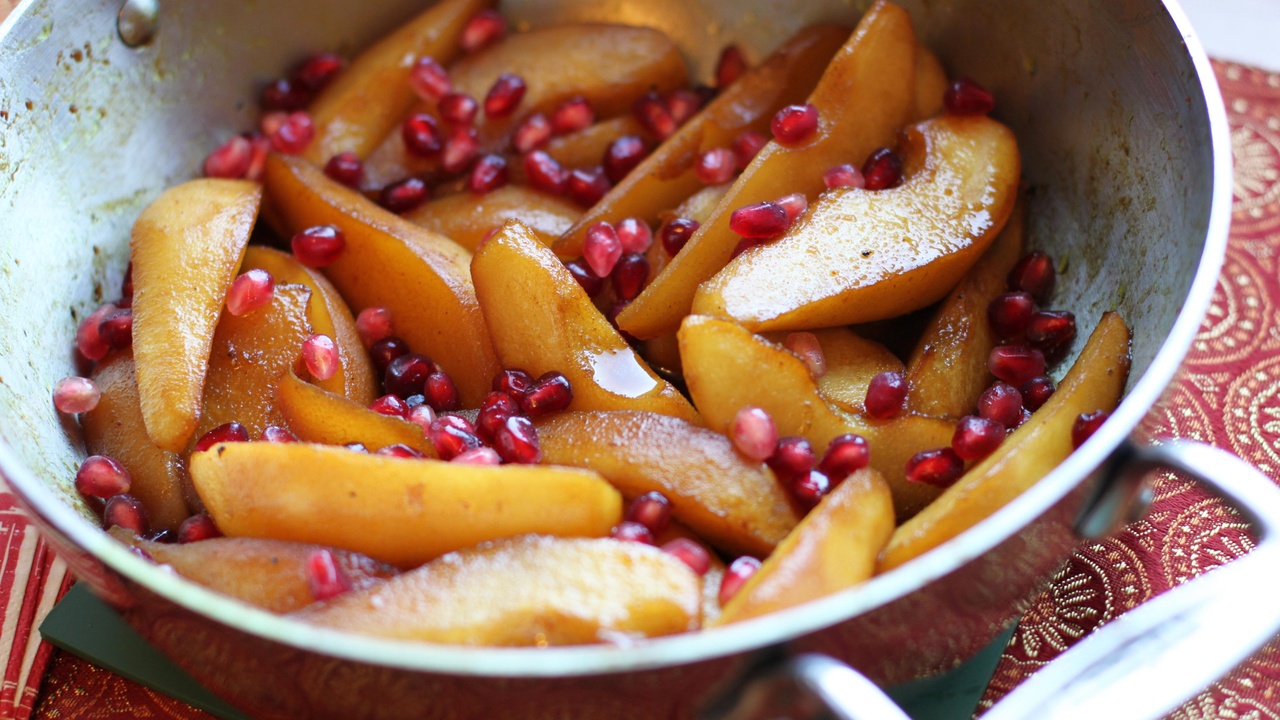Egg Roll in a Bowl

This easy one-pan meal combines all the delicious flavors of our favorite Chinese appetizer, minus the wheat, soy, and inflammatory fryer oils. A few secret spices add aroma and complexity to this otherwise simple dish that can be on the table in less than 30 minutes.
This thyroid-friendly version of Egg Roll in a Bowl is gluten-free, dairy-free, soy-free, Paleo-friendly, and low-carb. It's also colorful, nutrient-dense, and whole-food-based. Most importantly, it's doable and delicious.
This recipe is just right as-is, but here are a few ways you can customize it:
- Turn this filling into a gluten-free egg roll by wrapping it in rice paper rolls and sizzling them in avocado oil (instructions below).
- Add crunch by sprinkling it with toasted almonds.
- For those who eat grains or the heartier eaters at your table, feel free to bulk up this meal by serving it over a bed of rice.
- Enjoy it as a savory high-protein breakfast, topped with a fried egg.
Full disclosure: Some of the links in this post may be affiliate links. As an Amazon Associate, I earn from qualifying purchases. Purchasing a product using one of these links will support my work at no additional cost to you. Please know that I only recommend products I wholeheartedly stand by.
Chef's Notes:
This is a staple recipe on my own family table and one that everyone, including my kiddo, heartily enjoys. My original edited and scribbled-upon recipe sheet (my recipes always start on a blank 8 1/2 x 11-inch piece of scrap paper) is now well-splattered and hasn't changed in a couple of years. I've got it right where I want it, so I'm thrilled to share it with you today! I hope you love it as much as we do.
I'm far from the first person to post a recipe for Egg Roll in a Bowl on the internet, but I decided to add my own Hypothyroid Chef thumbprint because this is a one-pan dinner that just makes sense. It's quick, kid-friendly, and nutritious. And who doesn't love those yummy egg roll flavors? Plus, a lot of versions out there include ingredients that those of us with dietary restrictions don't eat, such as gluten, grains, and soy.
What's different about this version is that it is free of the wheat-based wrapper and inflammatory fryer oils that traditional egg rolls include. It also utilizes coconut aminos in place of soy sauce. You may be surprised to learn that soy sauce is usually made with wheat and contains gluten. Both wheat and soy can be problematic for thyroid patients, but the good news is that today, there are solid replacement options. I'll share more about them below...
The most important thing is that this recipe is a delicious crowd-pleaser. Serve it up, and no one will be thinking about what's not in it. They'll be too busy enjoying the aromas, textures, colors and flavors that are!
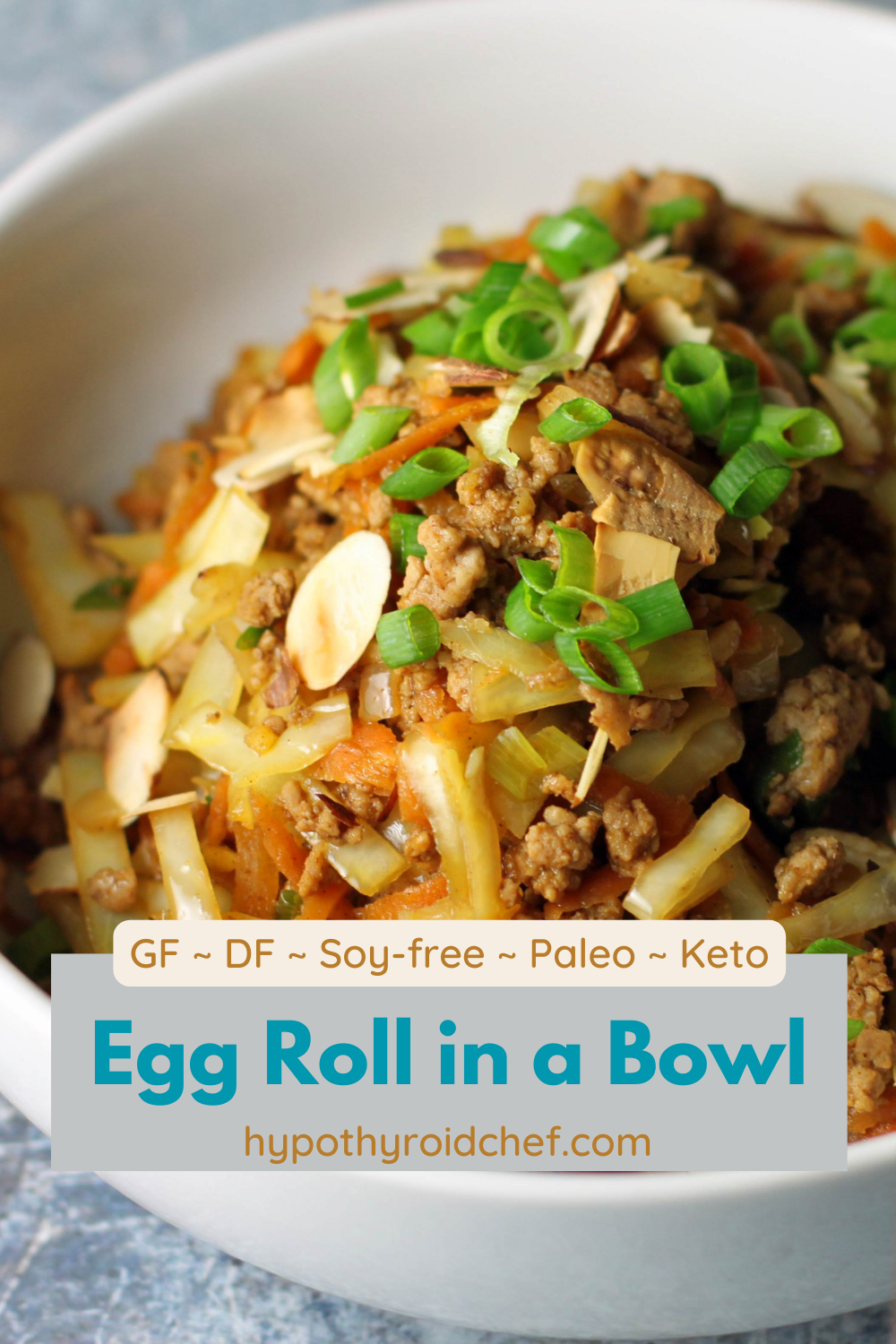
How to turn this into Gluten-Free Egg Rolls
If you're craving a more traditional egg roll experience, I've got you covered.
Simply use the "Egg Roll in a Bowl" as filling, wrap them up in rice paper, and fry them in a skillet (detailed instructions below). Because this recipe makes such a big batch, these GF egg rolls can be a fun way to use up the leftovers.
While these aren't exactly the same as a traditional wheat-based egg roll, they make crispy and irresistible finger food. And if you have kids at home, they'll descend on these like a swarm of locusts!
3 Steps to make this into GF Egg Rolls:
- Use Vietnamese rice paper rolls to wrap up a small amount of the cooked mixture. Dip the rice paper into warm water to moisten, and then add a small scoop of filling to the center of the circle. Fold them up like a burrito. PRO TIP: Make the rolls small enough that the wrapper rolls around the filling twice. Making sure they're double-layered this way will help prevent them from tearing in the skillet and will also make them easier to handle and eat.
- Heat about 1/4-inch of avocado oil (or other high-heat-friendly oil) in a medium skillet over medium-high heat. Once hot, add rolls and sizzle until golden and bubbly on the bottom, then flip and sizzle the other side. Drain on paper towels.
- Enjoy!

Is it okay to eat cabbage with hypothyroidism?
That cabbage you may have been worried about eating with hypothyroidism or Hashimoto's? Don't be. Any thyroid-inhibiting properties in cruciferous veggies, like cabbage, broccoli, or cauliflower, are greatly diminished by cooking. This recipe takes care of that.
Although Thyroid Thrivers were once cautioned against eating these nutritional powerhouse foods, most functional thyroid experts now encourage the consumption of crucifers as long as they're cooked or fermented whenever possible and eaten in reasonable amounts.
What are Coconut Aminos?
Coconut aminos is a dark brown sauce that is salty, umami, and slightly sweet. Despite the name, it's not actually made from coconuts but from the highly nutritious sap of the coconut palm, known as Neera. Once harvested, neera ferments easily, which is how coconut aminos are made.
For our thyroid-friendly cooking purposes, coconut aminos provide us with a gluten, grain, and soy-free alternative to soy sauce. Typically, soy sauce is made by fermenting wheat and soy, and contains gluten. Tamari, which tastes nearly identical to soy sauce, is made using only soy, and is typically gluten-free.
For those of us who wish to avoid gluten and soy, both of which can be problematic foods for Thyroid Thrivers, coconut aminos are our best replacement option for soy sauce.
Soy sauce epitomizes that beguiling fifth flavor that makes many recipes so irresistible: Umami. This Japanese term defies description somewhat, but synonyms include savory, meaty, and complex. Life without umami is not an option for this Hypothyroid Chef, so coconut aminos are something I always have on hand.
In most recipes, coconut aminos make a great substitute for soy sauce or tamari. Coconut aminos have that salty, umami taste and are very similar to soy sauce, albeit with a slight sweetness. That touch of sweetness makes coconut aminos preferable (in my opinion) in this Egg Roll in a Bowl recipe, bringing out all those sweet, savory, and aromatic flavors from the other ingredients, like the Chinese 5-spice powder.
Comparing Brands of Coconut Aminos
One thing to note when shopping for coconut aminos is that there can be significant variation in flavor across brands. Coconut Secret and Big Tree Farms are two of the main organic brands I see here in the states.
Coconut Secret contains 270 mg of sodium per tablespoon, whereas Big Tree Farms contains 500 mg of sodium per tablespoon. The difference is nearly double! Consequently, so is the flavor. It's kind of like the difference between regular and low-sodium soy sauce, and it makes my job as a recipe developer a little tricky. When calling for coconut aminos, I always feel the need to clarify which brand I use because the finished product can be quite different, depending.
As a chef who likes big flavor, Big Tree Farms is my go-to brand. I find that the umami saltiness of Big Tree more closely mirrors that of regular soy sauce or tamari and therefore makes a more reliable substitute. When using Coconut Secret, I find the sweetness more prominent and the saltiness lacking. In my opinion, recipes made with this brand don't taste like they were made with soy sauce but with...something else.
That said, Coconut Secret is the way to go for those who prefer lower sodium, perhaps due to high blood pressure or another medical condition. Otherwise, Big Tree Farms gets my vote for flavor as a more accurate soy sauce substitute.
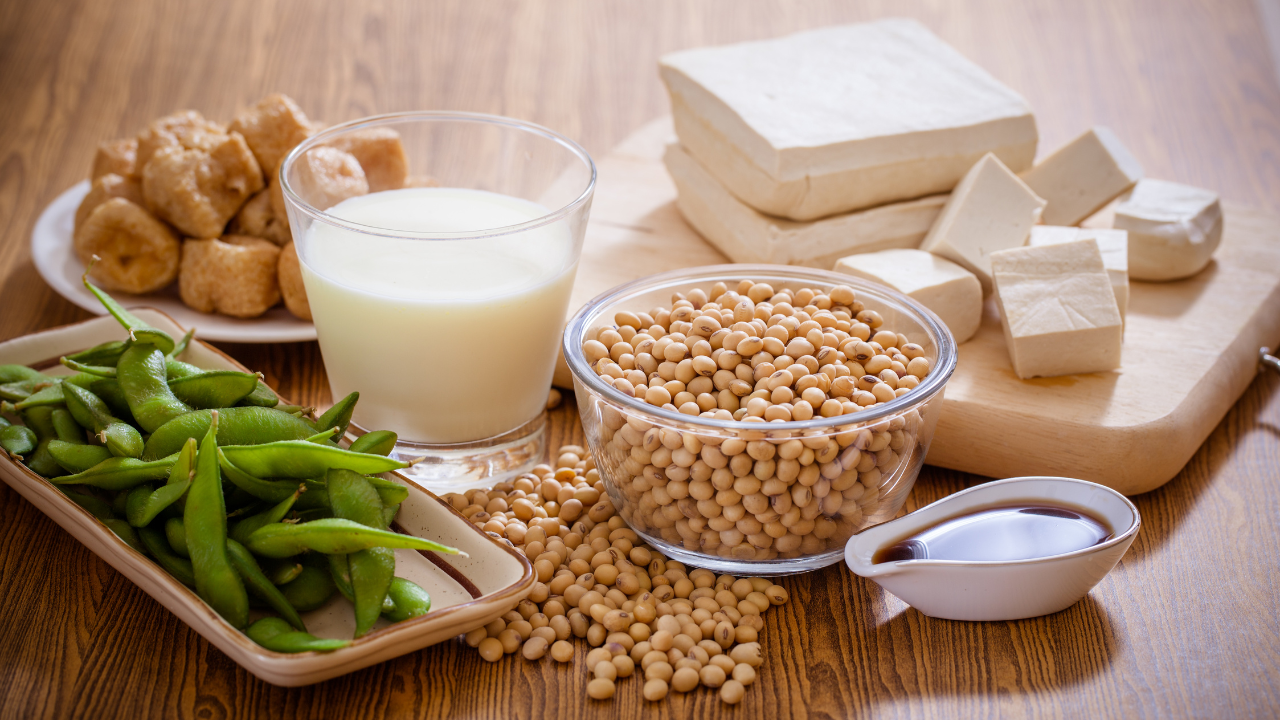
Is soy problematic for the thyroid?
This legume is one of the more highly controversial foods in the world of thyroid-healthy eating. While every individual is different, many functional/holistic thyroid experts feel that soy as a dietary staple is a cautionary choice for thyroid patients due to its estrogenic and goitrogenic effects on the body. It has also become one of the top food allergens, especially in children.
Here are a few reasons why some experts feel soy can be problematic for hypothyroidism, according to holistic nutritionist Adrienne Klein:
- Soy can inhibit thyroid function by blocking the activity of the TPO enzyme, which is critical to the production of thyroid hormones.
- The goitrogenic properties of soy cannot be cooked out, unlike goitrogenic vegetables (like broccoli, cabbage, Brussels sprouts, bok choy, etc.).
- Soy is an estrogenic food, which means that soy and soy isoflavone mimic estrogen in the body.
- Too much estrogen in the body can lead to estrogen dominance, ovarian and breast cancer, autoimmune issues, and hypothyroidism.
- Soy has been linked to the development of Hashimoto's.
While those all sound like good reasons to avoid soy, other experts disagree with the need for avoidance of soy by thyroid patients. Dr. Alan Christianson, NMD, is one of those experts who has debunked the recommendation for thyroid patients to avoid soy.
I asked him about this on episode 51 of The Thyroid-Healthy Bites Podcast, and he shared his thoughts on his comprehensive review of the scientific data on soy and thyroid. Ultimately, after conducting a thorough examination of the research, he came away in favor of soy as a good option for thyroid patients, for hormone health, and for several other health reasons.
"So the benefits [of soy] are real," he concluded. "And soy being a bad thing? I tried to find it and it doesn't exist."
You can hear his complete analysis of soy at minute 25:18 of the episode entitled "Hormone Healthy Eating with Dr. Alan Christianson." It's worth checking out.
While there's growing disagreement on the general recommendation to avoid soy, the fact remains that some individuals have identified soy (or legumes in general) as a food they are sensitive to and need to avoid.
Common sources of soy include:
- Tofu
- Tempeh
- Miso
- Tamari
- Soy milk
- Salad dressings
- Processed foods
- Infant formula
- Protein powders
- Supplements
- Chocolate (soy lecithin)
- Vegetarian/vegan meat alternatives
- Dairy-free products
- Edamame (soybeans)
- Hydrolyzed vegetable or soy protein
- Skin and beauty products
Even mainstream canned tuna brands that advertise "packed in water" are actually packed in soy-based vegetable broth.
Further Reading: Is Tuna Thyroid-Safe?
Label-reading becomes very important for those who need to avoid soy, which is all the more reason to avoid highly processed foods and prepare your own, colorful whole-foods-based meals, where you know what goes into it. That's exactly what we're going to do with this Egg Roll in a Bowl recipe!
What is Chinese 5-Spice Powder?
Chinese 5-Spice is one of my favorite culinary flavor boosters. There are several formulas for this spice blend, which is said to have been created to represent the five elements (wood, fire, earth, metal, and water) with the five flavors (bitter, sour, salty, sweet, and umami). The five main spices included are cloves, fennel, star anise, cinnamon, and Szechwan pepper. Together, these flavors are said to balance and harmonize a person's yin and yang.
If you're hesitant to add another bottle to your spice collection, don't be. Chinese 5-Spice can take simple ingredients, like the ones in this recipe or in my Mashed Winter Squash, for example, and turn them into something sultry, spicy, sweet, and intoxicatingly aromatic.
If you don't have any on hand, making your own is pretty easy if you have a spice grinder. You could also use pre-ground spices, but grinding your own will create a far-superior tasting 5-spice.
Credit for this formula goes to NYT recipe developer David Tanis and is included in his absolutely to-die-for Roast Duck with Orange and Ginger. His 5-spice formula is a bullseye, so I wouldn't change a thing.
In a spice grinder, combine:
- 1 teaspoon black peppercorns
- 1 teaspoon Sichuan peppercorns
- 1 teaspoon fennel seed
- 1 teaspoon whole cloves
- 6 star anise
- 1 cinnamon stick (broken into pieces)
- 12 allspice berries
Grind to a fine powder and store in a glass jar for up to 1 year. Makes 3 tablespoons.
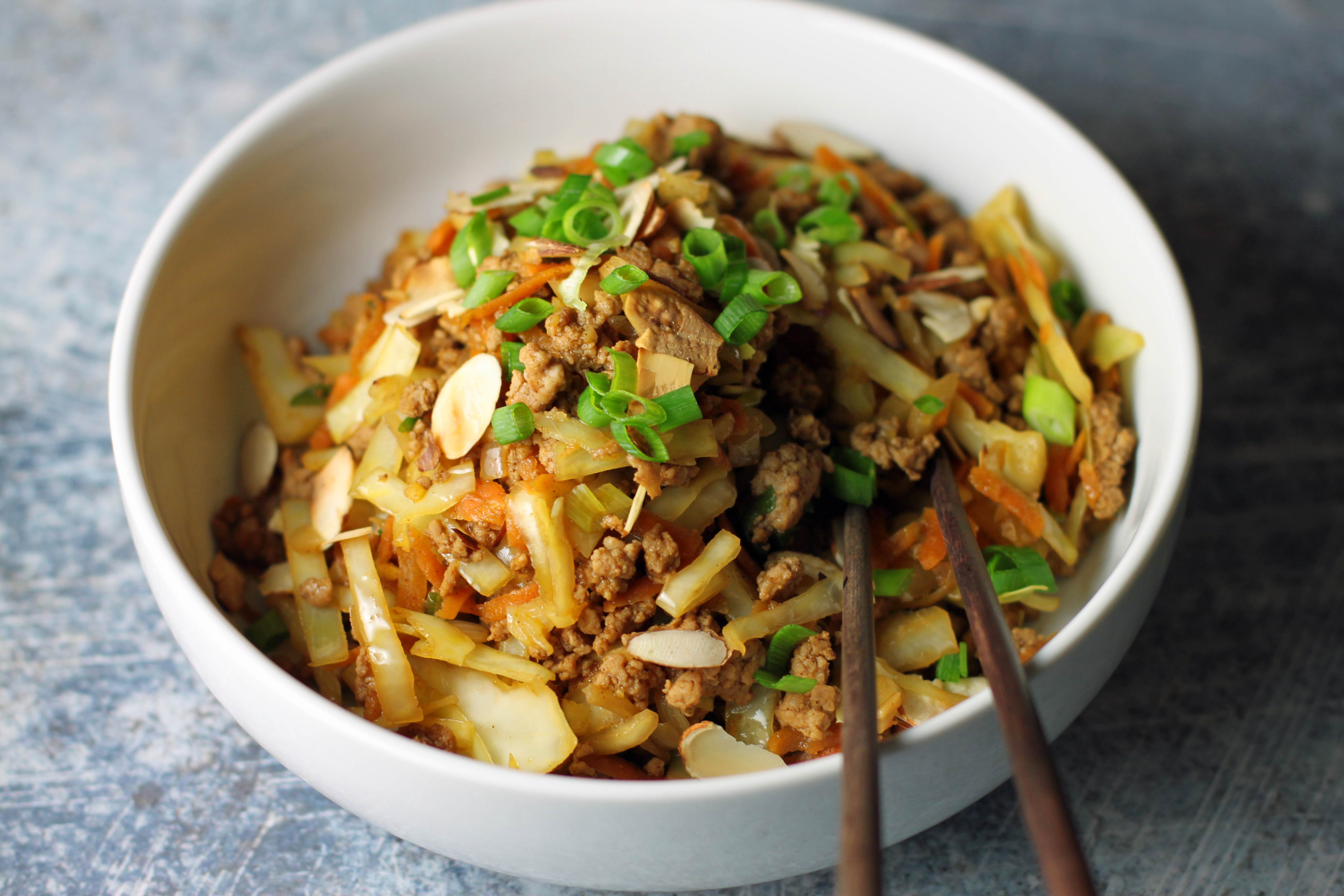
Thyroid Healthy Recipe Highlights
- Pastured Pork: A 3-ounce serving of pork contains 103% DV of tyrosine, 63% DV of selenium, and 17% DV of Zinc—3 key nutrients for thyroid health.
- Cabbage is an exceptionally nutrient-dense food with a low caloric price tag of just 22 per cup. Packed with antioxidants like vitamin C, phytonutrients, and fiber, cabbage can help lower chronic inflammation, protect the immune system, boost collagen production, support gut health, and improve digestion.
- Carrots: 1 cup of carrots provides 428% DV of Vitamin A, which can activate thyroid-hormone receptors and reduce chronic inflammation.
- Ginger aids in relieving both the inflammation and the sensitivity to cold sometimes caused by thyroid disease. It can also boost metabolism, improve digestion, and speed up slow gut motility often associated with an underactive thyroid.
- Garlic has many powerful healing properties and can aid or alleviate some of the symptoms of thyroid disease, such as inflammation, cardiovascular issues, decreased immunity, and increased infection. It can also support the liver in its detoxification efforts.
Happy cooking, happy thriving, and enjoy the recipe (below)!
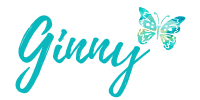
P.S. Need more thyroid-friendly recipe inspiration? I’ve got you covered. My Thyroid-friendly Everyday eCookbook features over 50 quick and easy, thyroid-friendly recipes your whole family will love. To take a peek at what’s inside, CLICK HERE.
More Low-Carb Meals to Try:
- Chilled Avocado Soup
- Broth-poached Chicken with Summer Tabbouleh
- Avocado and Grapefruit Salad with Broiled Salmon
- Ginger Basil Chicken Salad
- Hearty AIP Breakfast Bowl
- Lemon Chicken Broccoli Sheet Pan Meal
- Thai Beef Salad
Subscribe to my free newsletter for fresh recipes & lifestyle tips, delivered weekly, and receive a free gift!
By submitting this form, you agree to receive ongoing updates from Hypothyroid Chef





